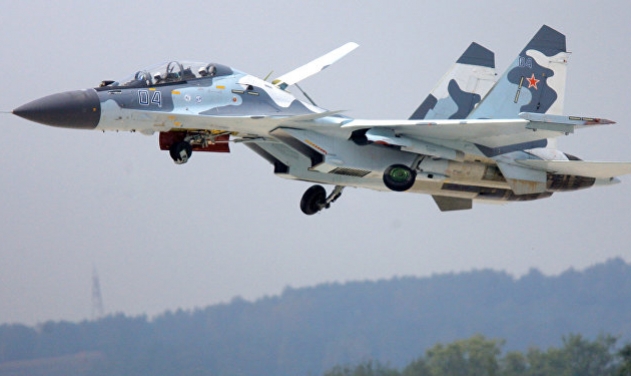India-Russia To Provide Brahmos Missile With Aircraft-Carrier Busting Capability

India and Russia are looking to provide the jointly developed air-launched Brahmos missile with aircraft-carrier busting capability from extended ranges.
The first test of the Brahmos launched from a specially modified Su-30MKI is slated to happen in December this year. The test involves hitting a warship target in the Bay of Bengal at an angle of 65 degrees. But this capability would not enough to stop an aircraft carrier of over 60,000 tonnes. "Carriers have sealable compartments designed to survive multiple hits from anti-ship missiles," a missile scientist was quoted as saying by India Today Thursday.
India will conduct another test in the Phase 2 of the Brahmos missile next year. The missile will be fitted with a modified radar seeker that can lock onto a moving aircraft carrier and plunge onto its decks in a near 90-degree death dive. The deck of a large aircraft carrier-nearly 300 metres long and 75 metres wide-presents the largest available target for a homing cruise missile's radar seeker, the report stated.
"The sheer kinetic energy of the missile travelling at nearly three times the speed of sound and the high explosive warhead will destroy the aircraft carrier," a scientist says.
The development comes amidst reports of China’s aircraft carrier program. The Chinese PLA Navy’s first home-made aircraft carrier is likely to be seaworthy by the year end and play host to 40-50 aircraft and an Active Phased Array Radar (APAR) radar .
China is three to five years away from launching its second aircraft carrier, the first such ship developed domestically. China's first aircraft carrier, the Liaoning, is a refitted Russian-made carrier delivered to the Chinese Navy in September 2012. It has a full displacement of over 50,000 tonnes.
Chinese Defence spokesman, Yang Yujin, said earlier that the second aircraft carrier will have a displacement of 50,000 tonnes and it will be conventionally powered and adopt the ski-jump take-off method for fixed-wing fighters.
China’s newest aircraft carrier will be larger than the first aircraft carrier Liaoning but will carry similar aircraft including the J-15, China's first-generation multipurpose carrier-borne fighter jet.
China PLA’s DF-21D anti-ship ballistic missile will expand the attack range of the PLA and is capable of striking Philippines and South China Seas, according to US’ Office of Naval Intelligence said in a report released on April 10 this year.
China is making major qualitative improvements in its naval aviation and submarine force and are increasingly capable of striking targets hundreds of miles from the mainland, the report said.
Naval analysts say it is still early days before India can field a similar carrier-killing capability. "The missile has to tick a number of boxes before it can be called a carrier killer," former navy chief Admiral Arun Prakash (retired) was quoted as saying by the news channel. "The missile has to be able to acquire the carrier over 300 km away, escape radar jamming from its target and, finally, home in on the target and destroy it."












